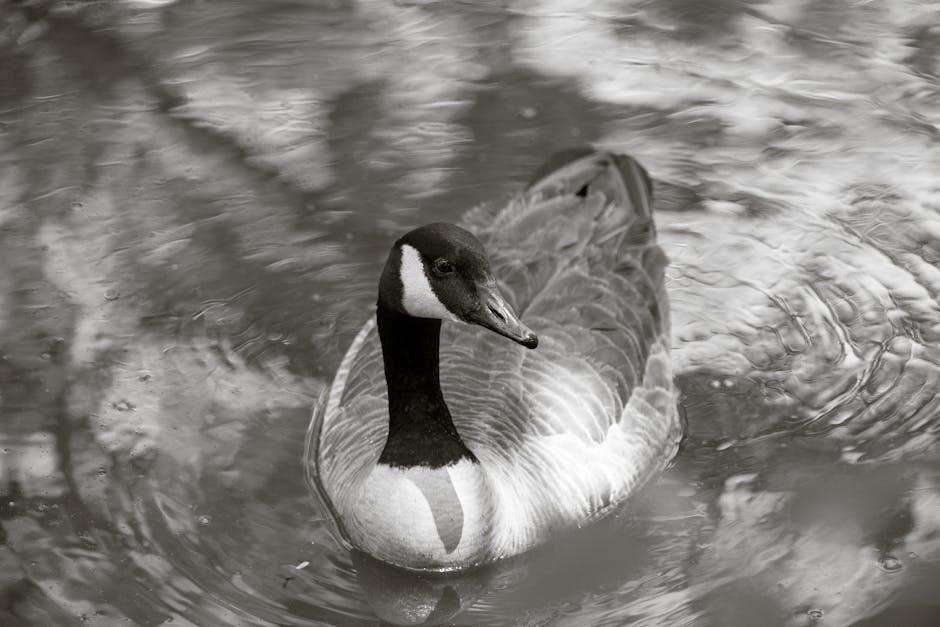T. Coraghessan Boyles Greasy Lake is a compelling coming-of-age story about three rebellious teenagers exploring identity and morality. Set near a polluted lake‚ it reflects their transformation from innocence to experience.
Historical Context of the Story
The story is set in the 1960s‚ a time of cultural upheaval‚ where societal norms were shifting‚ influencing the characters’ rebellious behavior and their idealized notions of defiance.
2.1. The Lake as a Symbol
The lake in Greasy Lake serves as a powerful symbol‚ reflecting the moral and emotional journey of the characters. Once a pristine and beautiful spot‚ it becomes polluted and murky‚ mirroring the corruption and decay of the characters’ innocence. The lake’s degradation symbolizes the broader societal issues of the time‚ such as environmental neglect and moral decline. Its transformation from a place of beauty to one of filth and danger underscores the characters’ transition from adolescence to adulthood. The lake also represents a space of rebellion and moral ambiguity‚ where the protagonists confront their darker impulses. The dead body found in the lake further emphasizes the loss of innocence and the consequences of reckless behavior. Through the lake’s imagery‚ Boyle critiques the idealization of rebellion and highlights the harsh realities of growing up.

Plot Summary of “Greasy Lake”
Three rebellious teenagers visit Greasy Lake‚ mistaking a stranger’s car for their friend’s. A violent confrontation ensues‚ leading to panic and a life-altering realization for the narrator.
3.1. Key Events and Turning Points
The story begins with three teenage boys visiting Greasy Lake‚ a polluted and neglected spot on the outskirts of town. They mistakenly identify a parked car as belonging to their friend‚ leading to a prank that escalates into a violent confrontation with the car’s owner‚ a rough-looking man. The narrator hits the man with a tire iron‚ believing he has killed him‚ which marks a terrifying turning point. The boys flee‚ hiding in the woods as the man regains consciousness and vandalizes their car. Later‚ two drug-addled women arrive‚ offering the narrator drugs‚ but he declines‚ signaling a shift in his perspective. The story concludes with the narrator driving away from the lake‚ reflecting on the night’s events and the loss of his youthful innocence. These events collectively usher the narrator into adulthood‚ forever altering his worldview.

Themes in “Greasy Lake”
The story explores themes of rebellion‚ identity‚ and the loss of innocence. It delves into the tension between youthful recklessness and the harsh realities of adulthood through transformative experiences.

4.1. Rebellion and Identity
The theme of rebellion and identity is central to Greasy Lake‚ as the narrator and his friends struggle to define themselves. They adopt rebellious poses‚ mimicking dangerous characters from movies and books‚ but their actions reveal a deeper insecurity. Their rebellion is more symbolic than real‚ driven by a desire to break free from suburban monotony. The narrator’s journey reflects a quest for identity‚ as he grapples with the illusion of toughness and the reality of his own vulnerability. The story highlights the tension between the idealized rebellion of youth and the harsh consequences of real-world actions. Through their experiences at the lake‚ the characters are forced to confront their true selves‚ leading to a profound shift in their understanding of rebellion and identity.
4.2. Coming of Age
The story of Greasy Lake serves as a poignant coming-of-age narrative‚ tracing the transformation of three young men from adolescence to adulthood. The narrator and his friends‚ initially consumed by a desire to appear rebellious and dangerous‚ are thrust into a situation that forces them to confront the harsh realities of life. Their encounter with the “greasy character” and the subsequent chaos mark a turning point‚ stripping away their illusions of invincibility and youthful arrogance. The narrator’s realization of the consequences of his actions‚ particularly his revulsion at the decadence he once idealized‚ signifies a profound shift in his perspective. This experience‚ filled with fear‚ guilt‚ and self-reflection‚ propels him and his friends toward a reluctant acceptance of responsibility and maturity. The story underscores the painful yet inevitable transition from innocence to experience‚ leaving the narrator forever changed by the events at Greasy Lake.

Character Analysis
The characters in Greasy Lake are central to the story’s exploration of rebellion‚ identity‚ and morality. The unnamed narrator‚ along with his friends Digby and Jeff‚ embodies the archetype of the rebellious teenager‚ seeking thrills and attempting to project a dangerous image. However‚ their actions reveal their underlying innocence and naivety. Digby‚ the most assertive of the group‚ often takes the lead‚ while Jeff appears more reserved. The “greasy character” they encounter serves as a foil to their suburban upbringing‚ representing a darker‚ more hardened reality. The two women who arrive later symbolize the allure and risks of a decadent lifestyle. Through their interactions‚ the narrator undergoes significant character development‚ moving from bravado to self-reflection and a dawning realization of the consequences of his actions. This transformation underscores the story’s coming-of-age themes‚ as the narrator and his friends are forced to confront their own vulnerabilities and the harsh truths of adulthood.

Symbolism in “Greasy Lake”
The story is rich in symbolism‚ with the lake itself serving as a central symbol of moral decay and transformation. Once a pristine and beautiful spot‚ Greasy Lake becomes a polluted and desolate place‚ mirroring the characters’ inner corruption and the societal decay of the 1960s. The lake’s murky waters symbolize the unknown‚ danger‚ and the loss of innocence. The station wagon‚ representing suburban comfort and security‚ is violently transformed into a wreck‚ symbolizing the destruction of the boys’ youthful illusions. The dead body in the lake serves as a stark reminder of the consequences of their actions and the harsh realities of adulthood. The two women who appear later symbolize the allure of rebellion and the moral ambiguity that the boys are drawn to. Through these symbols‚ Boyle underscores the themes of rebellion‚ decay‚ and the transition from innocence to experience.
T. Coraghessan Boyle’s Writing Style
T. Coraghessan Boyle’s writing style in Greasy Lake is vivid and descriptive‚ creating a gritty‚ immersive atmosphere. He employs a narrative voice that blends humor with darkness‚ capturing the recklessness and naivety of youth. Boyle’s prose is rich in sensory details‚ painting the lake’s decay and the characters’ moral ambiguity. His dialogue is sharp and realistic‚ reflecting the bravado and uncertainty of the teenage protagonists. The story’s tone shifts seamlessly from lighthearted rebellion to tense confrontation‚ showcasing Boyle’s mastery of pacing. Themes of identity and rebellion are woven subtly throughout the text‚ often through symbolic imagery. Boyle’s unique voice and layered storytelling make Greasy Lake both a compelling and thought-provoking read‚ leaving a lasting impression on its audience.
Moral and Ethical Questions
Greasy Lake raises significant moral and ethical questions‚ particularly through its exploration of rebellion and identity. The story challenges readers to consider the consequences of reckless behavior and the illusion of invincibility. The narrator and his friends engage in acts of vandalism and harassment‚ believing themselves to be “bad‚” but their actions lead to a violent confrontation and a deeper understanding of their own vulnerability. The ethical dilemma arises when the narrator must confront the reality of his choices‚ including the potential harm caused to others. The story also questions the glorification of rebellion‚ revealing the emptiness and superficiality of their antics. Ultimately‚ the narrator’s refusal of drugs and his retreat from the chaos suggest a moral awakening‚ inviting readers to reflect on the true cost of rebellion and the importance of accountability. The story thus serves as a cautionary tale about the complexities of youthful experimentation and the need for ethical awareness.
The Role of Setting in the Story
The setting of Greasy Lake plays a pivotal role in shaping the narrative and its themes. The lake‚ once a pristine and beautiful spot‚ has deteriorated into a murky‚ polluted environment‚ symbolizing the moral and ethical decay of the characters and their world. Located on the outskirts of town‚ the lake serves as a refuge for rebellion and experimentation‚ away from the constraints of suburban life. The surrounding area‚ with its housing developments and shopping malls‚ contrasts sharply with the lake’s desolation‚ highlighting the tension between conformity and rebellion. The lake’s isolation and darkness create an atmosphere of ambiguity and danger‚ which escalates the characters’ reckless behavior. Boyle uses the setting to mirror the characters’ internal struggles‚ as the lake’s degradation reflects their own moral corruption and the loss of innocence. The setting thus becomes a character in itself‚ driving the plot and underscoring the story’s themes of rebellion and transformation.
T. Coraghessan Boyles Greasy Lake is a profound exploration of rebellion‚ identity‚ and the loss of innocence. Through the narrator’s journey‚ Boyle masterfully captures the tension between youthful idealism and harsh reality. The story’s setting‚ a polluted lake on the outskirts of town‚ serves as a powerful metaphor for moral decay and transformation. The characters’ experiences at Greasy Lake mark a pivotal shift from adolescence to adulthood‚ leaving an indelible mark on their lives. Boyle’s vivid storytelling and rich symbolism ensure that the narrative lingers in the reader’s mind long after the final page. The availability of Greasy Lake in PDF format has made this timeless tale accessible to a wider audience‚ allowing readers to reflect on its universal themes of growth and self-discovery.

Availability of “Greasy Lake” in PDF Format

T. Coraghessan Boyles Greasy Lake is widely available in PDF format for readers seeking convenient access to this iconic short story. The story‚ part of the collection Greasy Lake and Other Stories (1985)‚ can be found on various online platforms‚ including academic databases‚ eBook repositories‚ and educational websites. Platforms like Google Books‚ Project Gutenberg‚ and university libraries often provide access to the PDF version‚ either for free or through subscription-based services. Additionally‚ many literary websites and forums offer downloadable PDFs of the story‚ catering to students and enthusiasts of American literature. For those seeking a digital copy‚ searching through reputable sources or accessing it through institutional databases is recommended to ensure authenticity and quality. The PDF format allows readers to engage with Boyles vivid prose and thematic depth in a modern‚ portable way‚ making Greasy Lake more accessible than ever.

